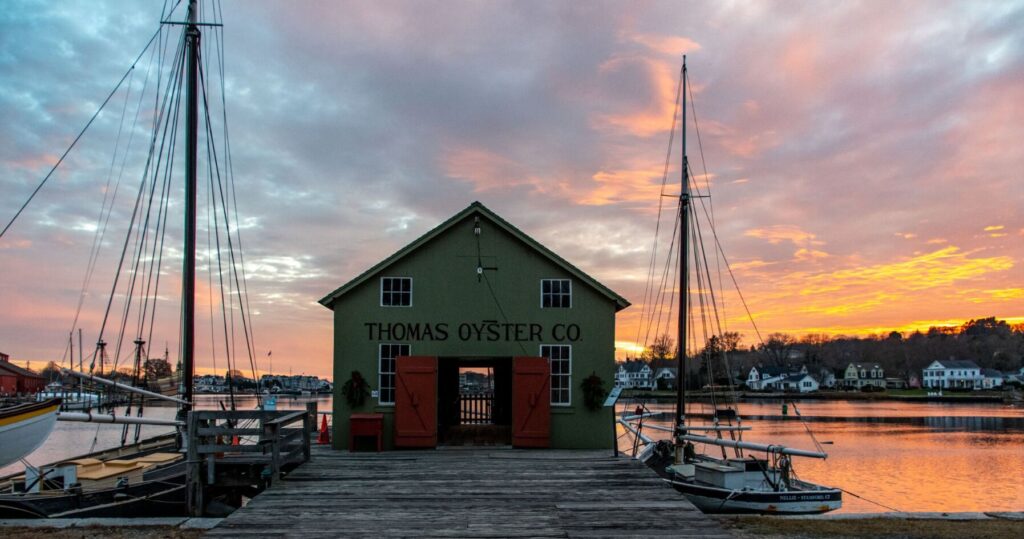thomas oyster house


The Thomas Oyster House was constructed around 1874 at City Point, New Haven, Connecticut, by Thomas Thomas. New Haven once was the largest oyster distribution center in New England. Initially Mr. Thomas used the building as a culling shop, where oysters were sorted by size and shipped in their shells, by the barrel, to markets in New York City and as far away as California. Following Mr. Thomas’s death, his son John took over the business and converted it to a shucking house. This involved opening the oysters upon delivery by the oyster boats. They were then packed in iced wooden kegs ready for delivery to various markets. The building was used in the oystering business until John Thomas’ retirement in 1956.
Research carried out in 1967 revealed that the Thomas Oyster House was one of the few remaining buildings that could be classified as a typical small northern oyster house.
Donated to Mystic Seaport Museum in 1970, the Thomas Oyster House was brought from New Haven, Connecticut, by barge, restored on land, and then placed on its current waterfront pier by crane in 1984.
Oyster Farming
As demand for oysters grew and natural beds were overfished, oystermen in the 1850s learned to cultivate oysters in undersea “farms.” Surveyed and buoyed, these private grounds extended along the Connecticut shore. Some were used for spawning new crops, often using adult “seed oysters” dredged from natural beds. Others were used for growing oysters to market size. Oystermen working on private grounds were free to use steam- or gasoline-powered vessels to dredge, and to haul their dredges with power. Like farmers tending their fields, oystermen laid down old shells, which they called “cultch,” for juvenile oysters to settle on, then mopped up the predatory sea stars and otherwise protected their “crop” for the three years it took the oysters to grow to market size.

